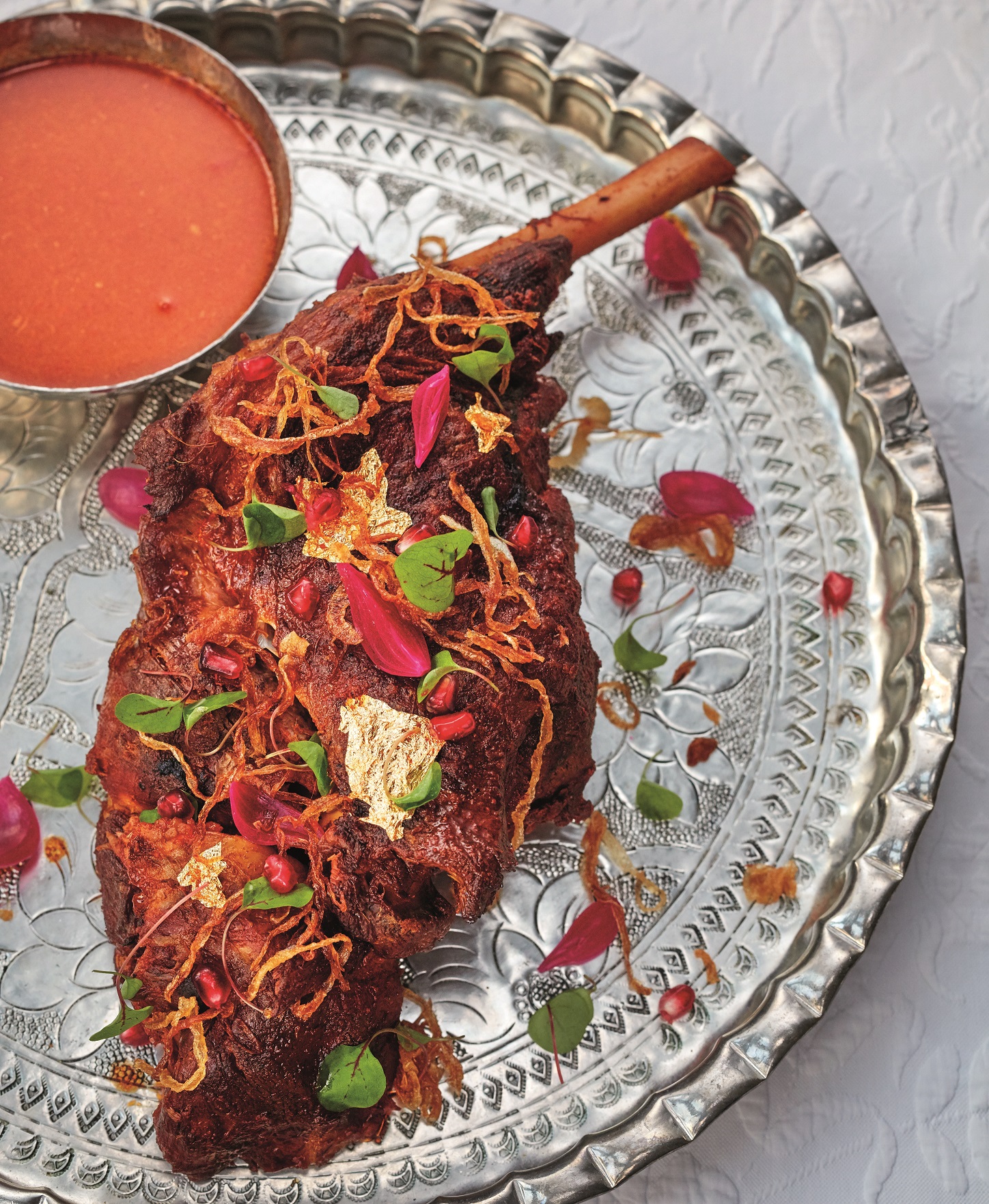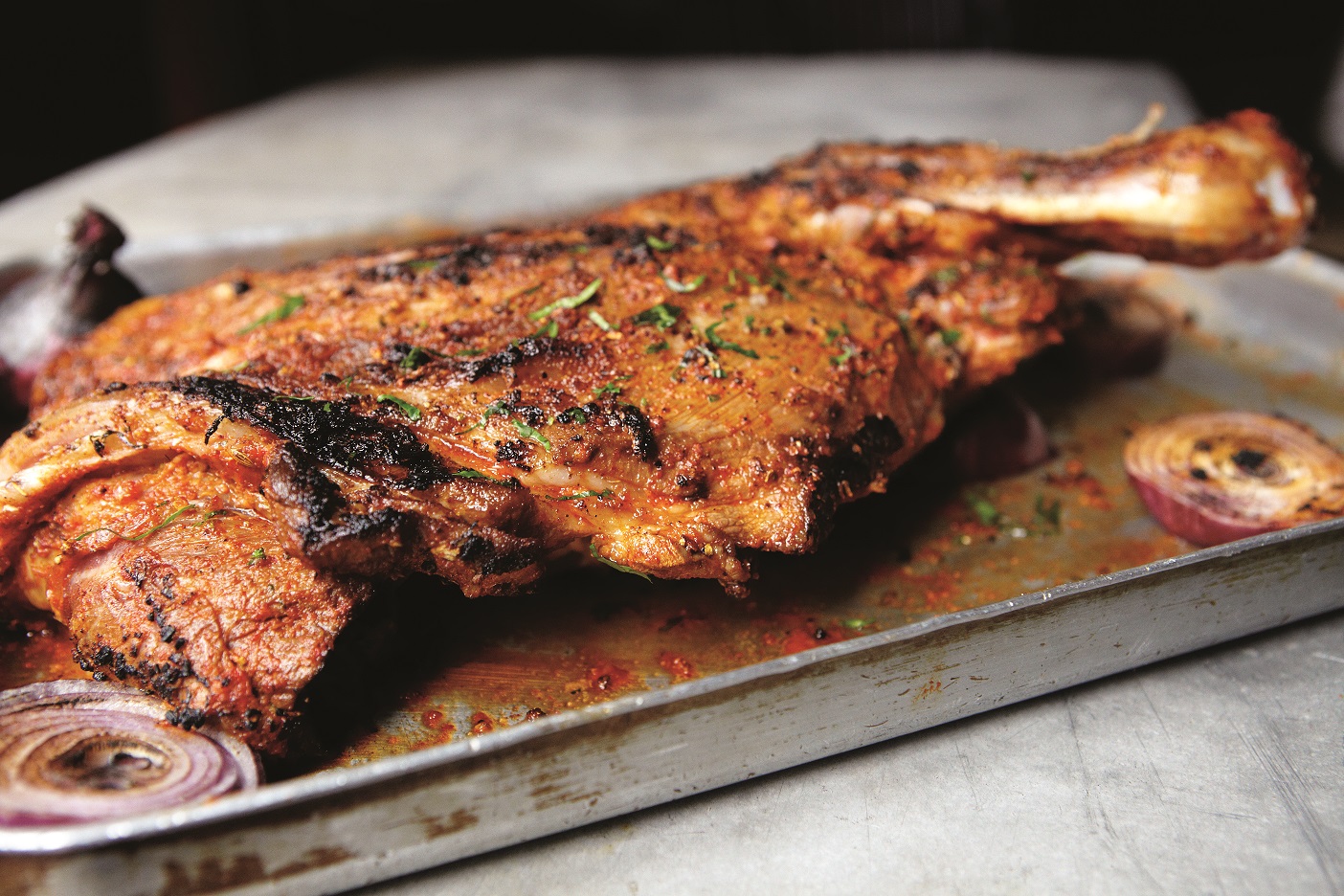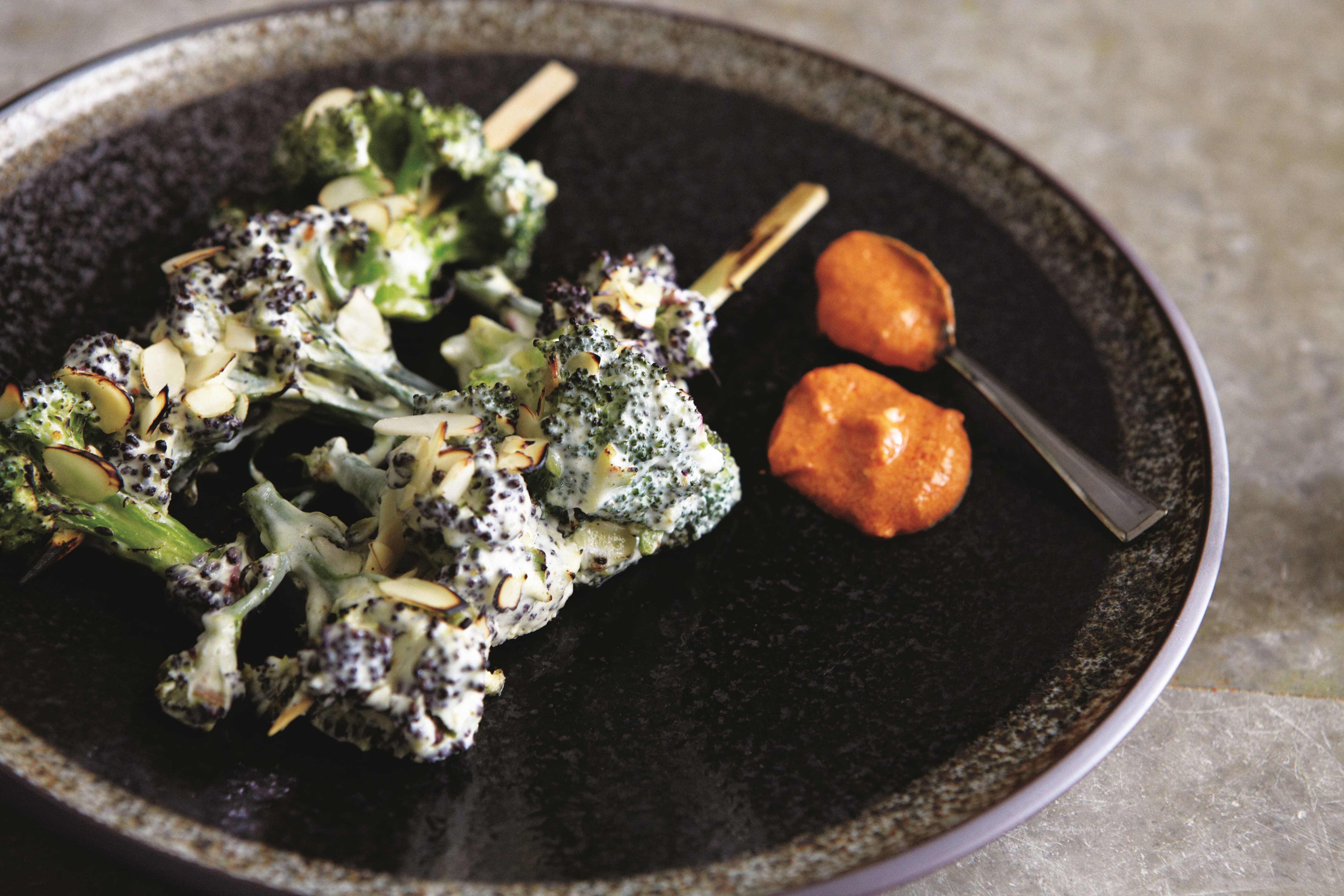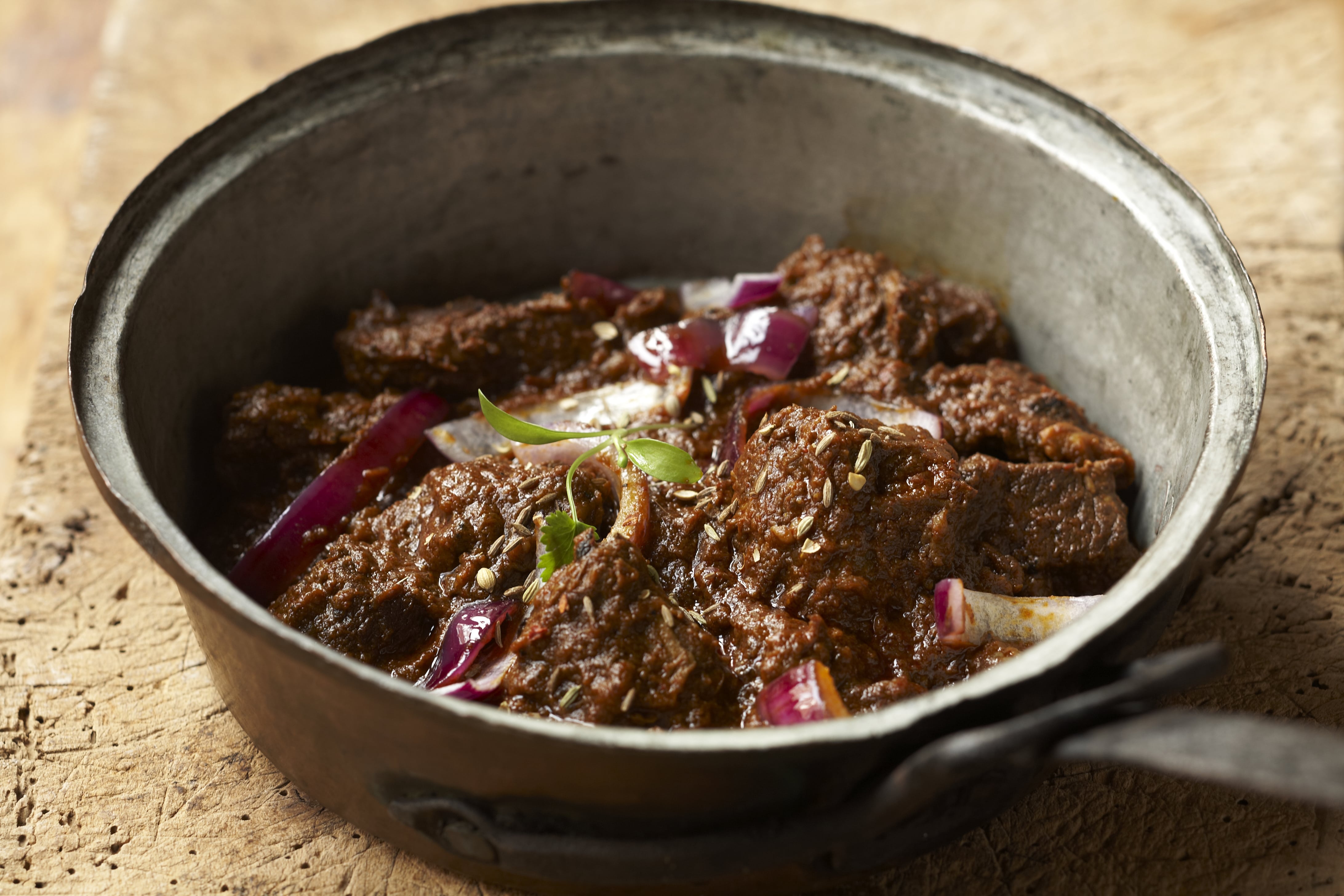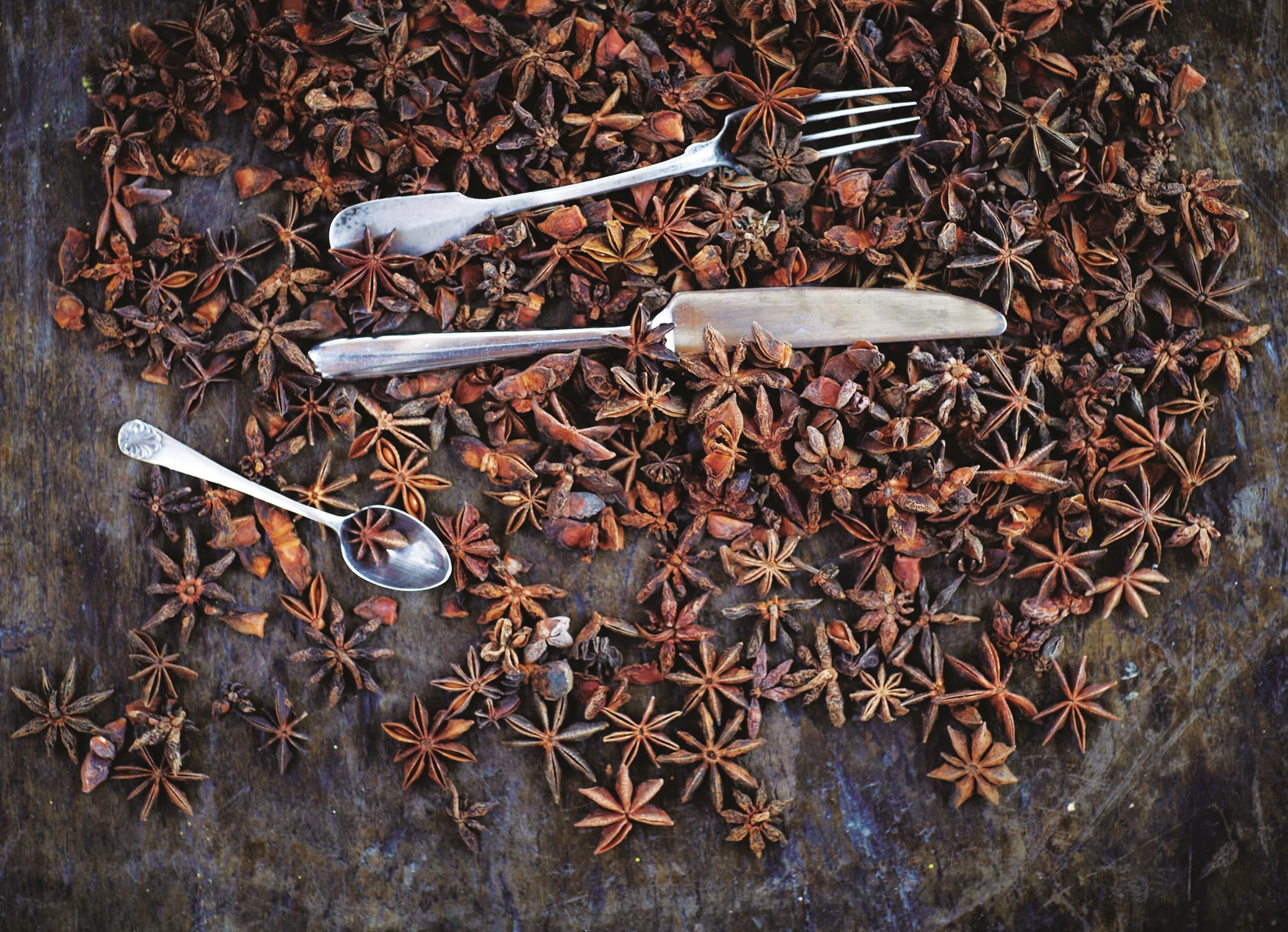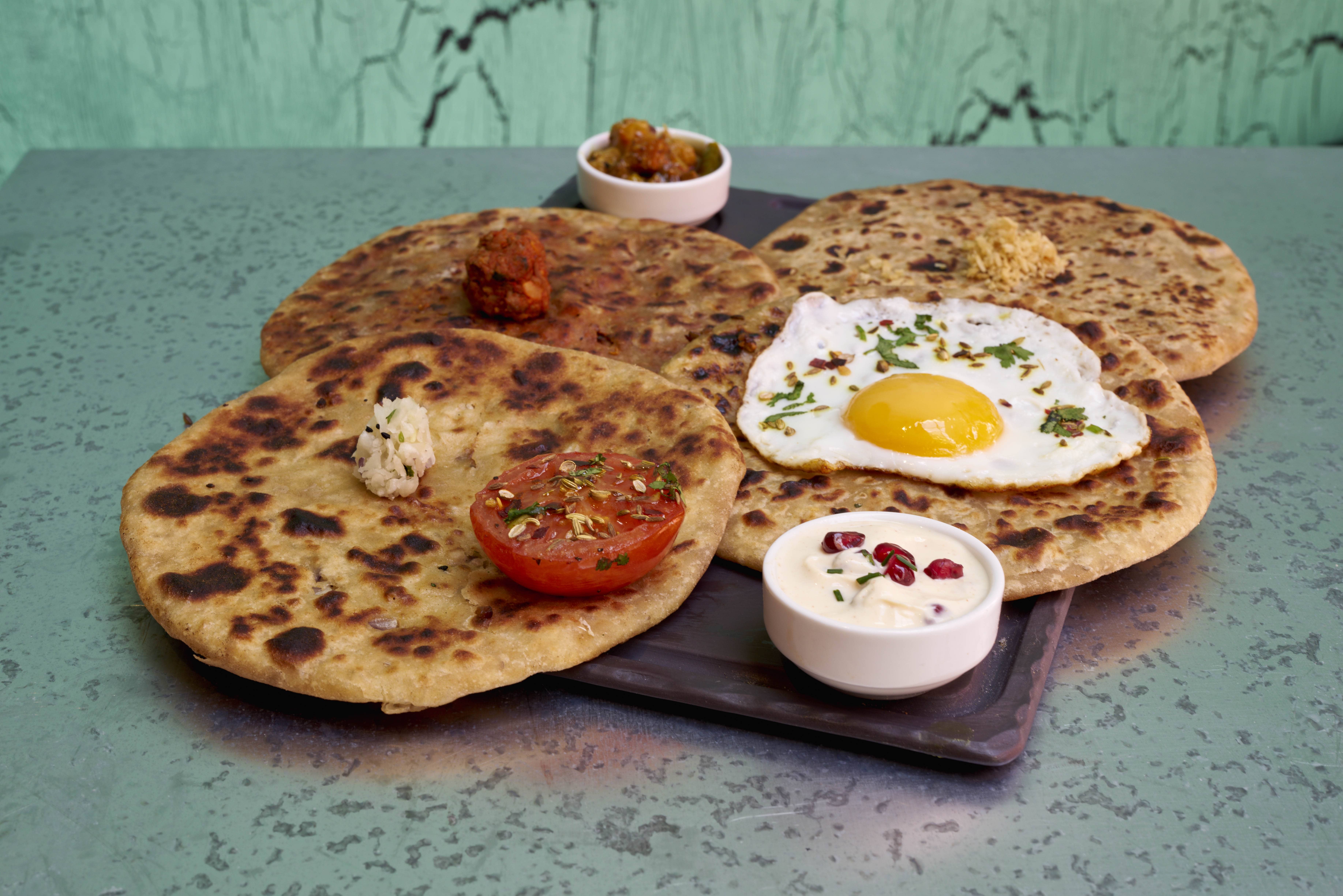January – Whole Braised Leg of Lamb with Peppercorn and Nutmeg
June saw the launch of Vivek Singh’s latest cookbook, Indian Festival Feasts! In celebration of this, for the June recipe we’re sharing an ultimate celebration dish. Raan; whole braised leg of lamb with peppercorn and nutmeg is a real centrepiece! It’s also very simple as far as the number of ingredients go, making it an absolute must-try. It’s traditional to use leg of lamb, but the dish tastes just as good if you use shoulder.
Serves 6
Ingredients
- 1 leg of lamb, approx. 1.8kg (or if using spring lamb, use 2 shoulders)
- 3 bay leaves
- 3 cinnamon sticks
- 3 green or black cardamom pods
- 1 tablespoon butter
- 20g spring onion greens, thinly sliced
For the marinade
- 4 tablespoons ginger-garlic paste (see page 260)
- 1 tablespoon Kashmiri red chilli powder
- 2 teaspoons salt
- 200ml malt vinegar
- 100g crisp fried onions (see page 261)
- 1 teaspoon sugar
For the sauce
- 200ml tomato purée
- 1½ tablespoons black peppercorns, roasted in a dry frying pan for 30–60 seconds, then coarsely crushed
- ¼ nutmeg, grated
- 60ml single cream
- Salt
- Sugar, to taste
- 1 tablespoon butter
- 30ml rum (optional)
Method:
Remove the surface fat from the leg or shoulder of lamb and prick the leg thoroughly using the tip of a sharp knife or a trussing needle (you can ask your butcher to do this for you, if you wish).
Mix all the marinade ingredients together into a paste. Spread the paste all over the lamb and massage the spices in. Set aside to marinate for at least 30 minutes, or preferably for a few hours in the fridge.
Preheat the oven to 150°C/130°C Fan/Gas Mark 2.
Scatter the whole spices in a deep baking tray large enough to accommodate the leg, then place the marinated lamb on top. Pour over enough water to come three-quarters of the way up the lamb. Cover with foil and cook in the preheated oven for 2½–3 hours until the meat is soft and easily comes off the bone. Remove from the oven and let the leg cool, then drain and reserve the cooking liquor.
Once cool, make deep incisions into the leg and remove the meat from the bone. Cut the meat into 1cm thick slices and arrange on an ovenproof serving platter. Brush with the butter and heat in a warm oven; hold warm until ready to serve.
For the sauce, transfer the strained cooking juices to a pan, add the tomato purée and cook down slowly to a sauce consistency. Add the peppercorns, nutmeg and cream. Check the seasoning and add salt and sugar to taste. Whisk in the butter, remove from the heat and pour over the sliced raan. Sprinkle with spring onions. If using rum, pour it into a ladle and heat it until flaming, then pour over the lamb and bring to the table as the show-stopper.

